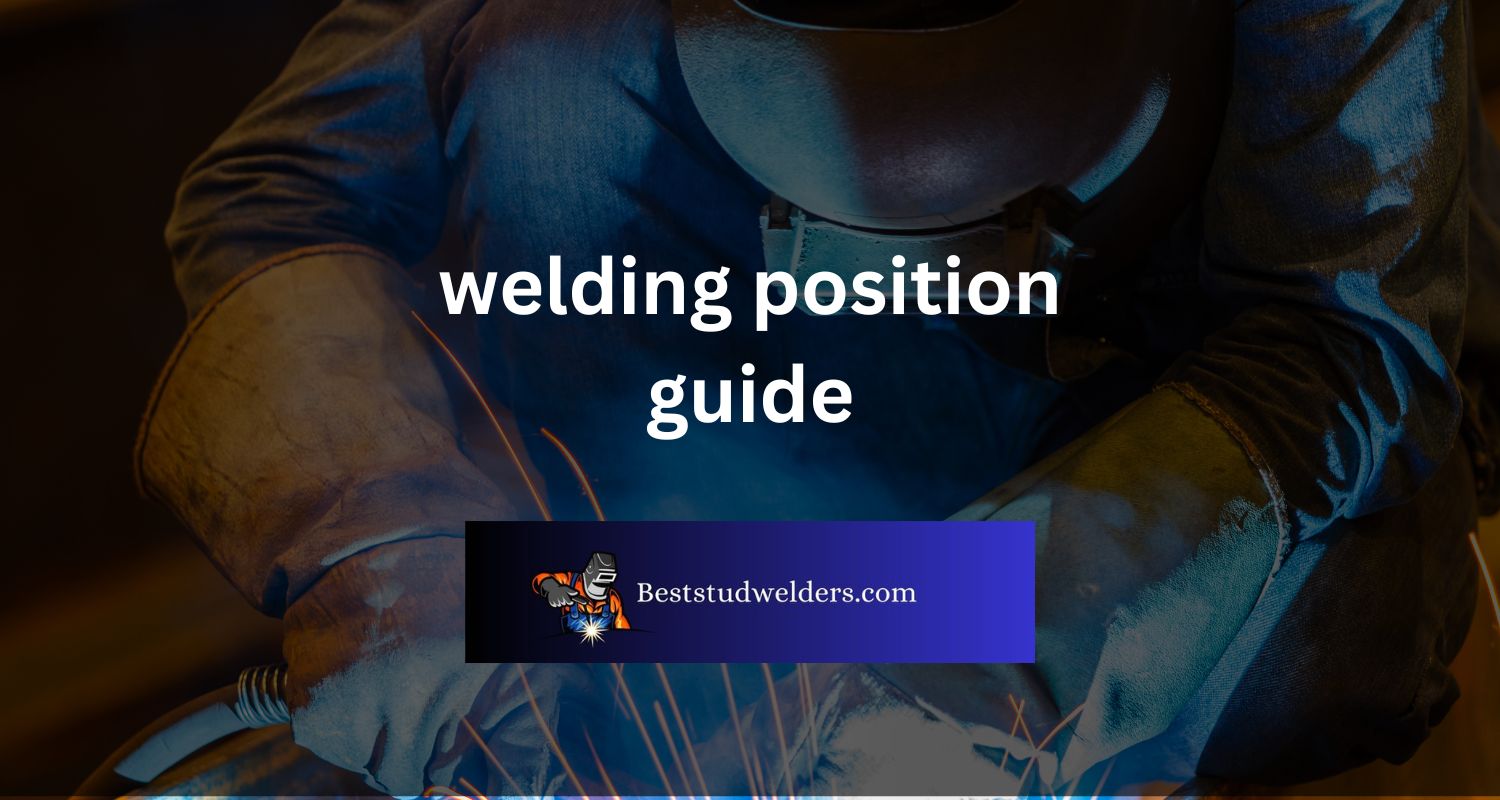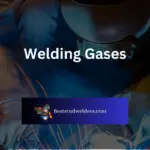Are you interested in welding but don’t know where to start? Do you want to ensure that your welding is quality, safe and precise?
Then this guide will be perfect for you. Welding position is an important factor when it comes to the integrity of a weld as well as the amount of access you have while working on hard-to-reach areas.
We’ll break down the most common positions and how they are used so that you can better understand the intricacies of welding and get started on your projects with confidence!
Welding Positions – The Fundamentals
Welding positions refer to angles and orientations welders may use when joining two pieces. Knowing and using the right welding position is key to making high-quality welds.
Four Types of Welding Positions
- Flat, horizontal, vertical, and overhead are the main types. Variations of these include inclined or rotated joints. Each needs different techniques and skills.
Tips for Proper Execution
- To properly weld, set up fixtures for alignment on the workpiece.
- Check that the fit-up meets specs before welding.
- Keep a steady hand and speed when making passes.
- Follow operating procedures when changing positions.
Being aware of different welding positions helps technicians adapt to projects with unique positional needs.
So, if you’re feeling a little horizontal, these welding positions will help you stay steady and strong.
Horizontal Welding Positions
To master the art of horizontal welding in all its forms, from flat position welding to horizontal fillet and groove welding, you need to understand the nuances of each technique. By exploring the sub-sections in this chapter of the Welding Positions Guide, you will gain a comprehensive understanding of the best practices for mastering all horizontal welding positions.
Flat Position Welding
Flat Position Welding is a popular technique for joining two flat surfaces. It involves melting metal and pouring it into a puddle, which creates a strong, neat weld.
Below is a Table of parameters for Flat Position Welding:
| Parameters | Description |
|---|---|
| Electrode Size | 1/16″ – 5/32″ (diameter) |
| Current Polarity | DCEN (Direct Current) |
| Welding Speed | 8-20 inch/min |
| Amperage | 70-90 amps |
| Joint Geometry | Butt |
Workpiece preparation is essential to avoid welding issues like porosity and incomplete fusion. These can cause weld cracks and decrease weld strength.
Interestingly, the American Welding Society states that 70% of all welding is flat position welding!
Horizontal Fillet Welding
When welding horizontally, two pieces of metal meet at an angle between 0 and 45 degrees. To get the job done right, preparation, positioning, and execution are key. Here’re four steps to get you ready for horizontal fillet welding:
- Set up with safety gloves and eyewear.
- Position them perpendicular and parallel.
- Use the right welding material and amperage.
- Control your speed and maintain clean execution.
For success, you need to keep your speed appropriate. Too fast can mean shallow penetration; too slow can mean burn-through or spatter.
Horizontal fillet welding is often used in construction, like bridges or factories. In World War II, it was used in shipbuilding. Welders improved their skills through practice and hard work.
So, let’s get grooving and weld horizontally!
Horizontal Groove Welding
When performing Horizontal Groove Welding, there are several key factors to consider. These include Weld Preparation, Arc Characteristics, Electrode Selection, Joint Design and Shielding Gas.
- Weld Preparation should include the proper Bevel Angle and Gap.
- Arc Characteristics should consider Penetration Depth, Travel Speed and Current Settings.
- Electrode Selection should consider the metal’s applicability and quality.
- Joint Design should consider Plate Thickness and Root Opening Size.
- Lastly, Shielding Gas should be an Argon-Based mixture.
To ensure that the parent material isn’t excessively heated or cooled too quickly, preheating methods can be used.
An experienced welder experienced difficulty in Horizontal Groove Welds on thick metal pieces with rough surfaces due to the high risk of cracking. The solution was to preheat nearby areas to reduce the cooling rate per unit time during welding.
So why settle for just standing up when you can weld vertically and show gravity who’s boss?
.jpg)
Vertical Welding Positions
To master the art of vertical welding positions in welding, you need to know the right techniques to use for each sub-section. Vertical Up Welding, Vertical Down Welding, and Overhead Welding techniques each have unique benefits to ensure that you get a flawless and seamless weld.
Vertical Up Welding
Vertical up welding is tricky. Accuracy and precision are essential so that the weld bead doesn’t drip or sag. Here’s a 3-step guide to mastering it:
- Prep the surface. Clean it, check for deformations that can interfere with the weld.
- Choose the right tech. Electrode selection, polarity, travel speed, amperage strength, angle of approach – all important.
- Weld slowly. Start at the bottom, move up in small increments. Consistent heat input gives strong joint.
It’s a skillful business. Electrode manipulation, travel speed, slag flow, directional control. Plus, add a slight curve or whipping motion for penetration and a smooth finish. All this ensures minimal distortion and high integrity in pipes, pressure vessels and more. Are you brave enough for vertical up welding?
Vertical Down Welding
Vertical Down Welding is the technique of welding from top to bottom in the vertical position. It requires skill and the right welding equipment to get great results. Here’s a 4-step guide:
- Get a secure base, and make sure the surfaces are clean.
- Start at the top and move downwards. Keep the speed and angle the same.
- Heat evenly so you don’t burn or buckle the material.
- Finish with a strong bead that fuses the materials together.
You must keep the arc length steady for consistent heat transfer. This method can be used on steel, stainless steel, and aluminum.
Vertical Down Welding can penetrate thicker material. But, it takes practice to avoid warping from the heat.
There was an incident, when a novice welder tried this on a high-rise building’s supporting beams. It caused structural damage. To prevent this, proper training and safety protocols must be followed.
Overhead Welding
Welding in a vertical direction? Let’s take it up a notch with Overhead Welding! Here’s what you need to know:
- Get your workspace ready and safety measures in check.
- Use the right gear, like the right electrode and filler material.
- Adjust techniques – gravity matters for molten metal.
- Keep an eye out for issues like porosity and undercutting.
- Practice and get the necessary certs before going pro!
Overhead welding can be tricky due to reduced visibility and fatigue on the arms and back. But it’s necessary if horizontal or vertical positions don’t work.
Pro Tip: Maintain a consistent travel speed during overhead welding to get an even bead profile and avoid burn-through or cold lap. Safety harness for our sense of humour? Now that’s a must!
Overhead Welding Positions
To master the art of overhead welding within welding positions guide, you must know about two types of overhead welding positions – horizontal overhead welding and vertical overhead welding.
Both positions demand different welding techniques and present their own set of challenges. By understanding the unique approach and application of each position, you will be able to deliver efficient and quality welds overhead.
Horizontal Overhead Welding
Horizontal overhead welding happens when the welder needs to weld a horizontal joint while looking upwards. This technique is perfect for joints that turn into vertical or inclining planes, and when there’s limited clearance underneath the joint.
To master horizontal overhead welding, try these steps:
- Put on the right safety gear, like helmets, gloves, protective clothing, boots, and so on.
- Set up your machine as per manufacturer instructions, and adjust it to fit the material size or thickness.
- Start welding from left to right in short bursts. While doing this, tilt the torch towards the direction of movement. Check for any defects or imperfections regularly.
Gravity can make it hard to weld horizontally overhead, as molten metal can fall off from the base metal and create gaps in the weld. To tackle this, use smaller electrodes or wire diameters. Keeping a steady hand and using the right angles while welding will also help avoid any flaws. Follow these tips to develop your skills at horizontal overhead welding and create reliable, high-quality workpieces easily.
So why not just weld overhead vertically?!
Vertical Overhead Welding
Welding’s an art that requires both skill and positioning. Most welding jobs need an overhead position. To master Vertical Overhead Welding, here are 6 steps:
- Clean the surface area.
- Set up the work station carefully.
- Wear protective clothing.
- Keep the electrode at a comfortable angle.
- Start welding from the top downwards.
- Check for any cracks or gaps.
Always check your equipment and ensure you’re in a well-ventilated space. Poor care with this task can lead to major damage and loss. Master it with these tips! Don’t miss out on the chance to develop this valuable skill.
Remember – for overhead welding, it’s best to grin and bear it!
Conclusion and Summary of Welding Positions
The Welding Positions guide is packed with info on different positions and techniques. It covers flat, overhead, vertical up, and vertical down positions. Plus, it explains how mastering these positions can help make sure welds are of high quality and reduce errors.
Novice welders can use this guide to gain technical competency and performance potential.
It’s important to note that practice is essential for learning these positions. Each has its own challenges, so it’s important to pay attention to detail during practice. Check equipment before starting and wear protective gear like helmets and gloves for safety.
Frequently Asked Questions
What is a Welding Position?
A welding position is a specific orientation in which welding is carried out. It determines the direction of the welding process and the position of the weld. There are four primary welding positions: flat, horizontal, vertical, and overhead.
What is a Flat welding position?
A flat welding position is when the welding is done on a surface that is parallel to the ground. It is the easiest welding position, and it is used for welding plates, sheets, and pipes.
What is a Horizontal welding position?
A horizontal welding position is used when the welding needs to be done on a surface that is horizontal or perpendicular to the welder. It is used for welding joints on ships, buildings, bridges, and other large structures.
What is a Vertical welding position?
A vertical welding position is used when the weld needs to be done on a surface that is vertical or flat. It is used for welding joints on walls, columns, and pipes.
What is an Overhead welding position?
An overhead welding position is used when the weld needs to be done on a surface that is above the welder. It is used for welding the underside of pipes, bridges, and buildings.
What are the factors that determine the welding position?
The factors that determine the welding position include the type of material, the thickness of the material, the welding process, the joint configuration, and the accessibility of the joint.
Paul Dixon is a certified welder with a wealth of experience in welding and related technologies. He started his career as an apprenticeship in welding, where he learned the ropes and acquired extensive skills in the craft.
Over the years, Paul has continued to sharpen his expertise, earning him top-rated welding certification. He remains one of the most outstanding welders in the industry.







